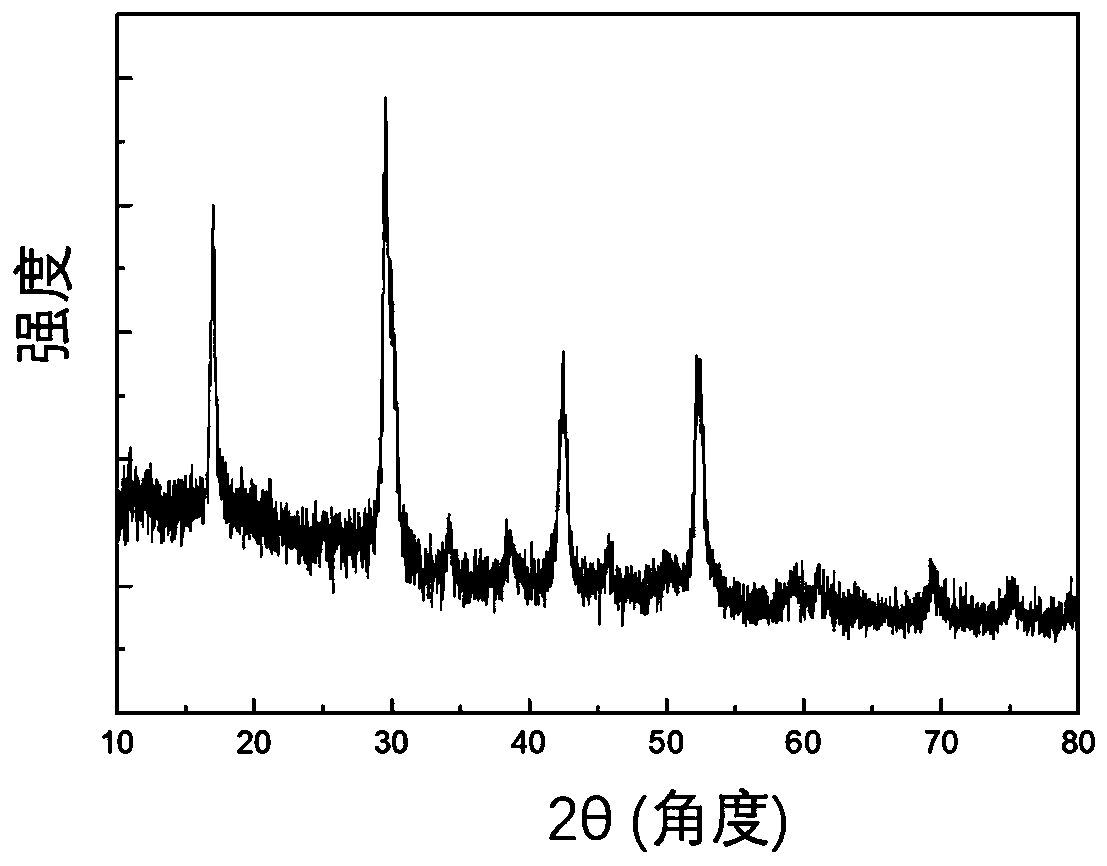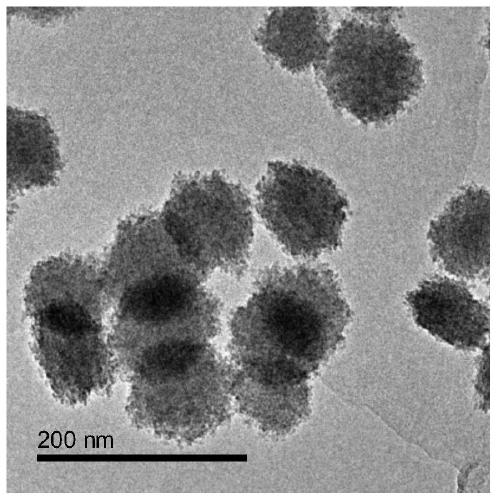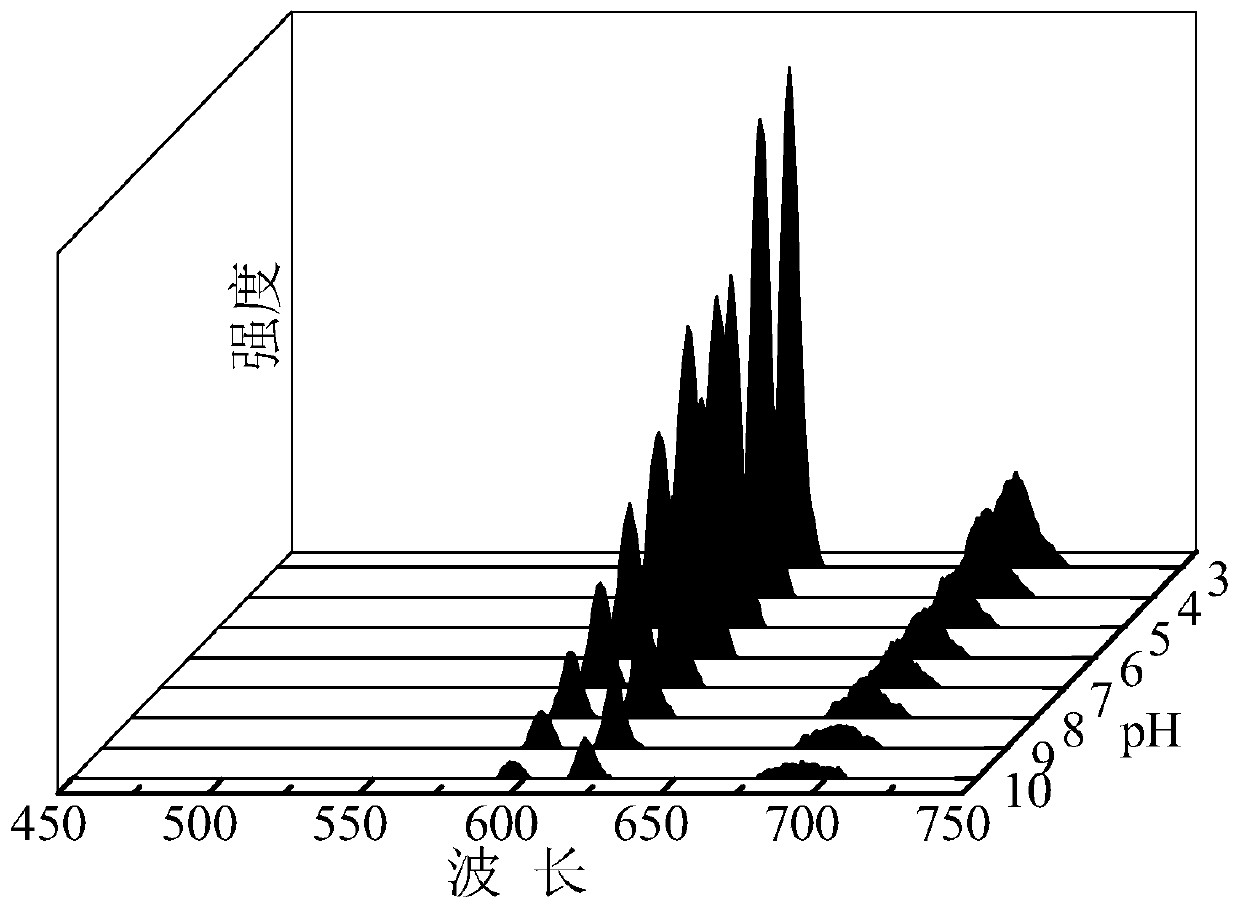Ratio type red light emitting fluorescent material and application of fluorescent material as ratio type fluorescent pH probe
A fluorescent material and ratiometric technology, which is applied in the application of ratiometric fluorescent pH probes and in the field of ratiometric red light-emitting fluorescent materials, can solve the problems of poor optical stability, small detection range, and high toxicity, and achieve low cost and low cost. Effect of toxicity, uniform shape
- Summary
- Abstract
- Description
- Claims
- Application Information
AI Technical Summary
Problems solved by technology
Method used
Image
Examples
Embodiment 1
[0022] Add 0.54 mmol of gadolinium nitrate, 0.2 mmol of lutetium nitrate, 0.2 mmol of cerium nitrate, 0.06 mmol of europium nitrate, 1 mmol of sodium chloride and 3 mmol of trisodium citrate into 10 ml of water and stir for 15 minutes ; Then add 20 ml of ethylene glycol to the above solution and stir for 20 minutes; then add 4 millimoles of ammonium fluoride and stir for 30 minutes; transfer the above solution to a 50 ml high-temperature reaction kettle, o C heat preservation for 5 hours; after cooling, centrifugal washing with deionized water and absolute ethanol, drying in a vacuum freeze-drying box for 1 hour to obtain the final product.
[0023] The powder X-ray diffraction analysis results show that the product obtained is pure hexagonal NaGdF 4 phase( figure 1 ). Transmission electron microscope observation showed that its morphology is uniform monodisperse cluster type nanoparticles ( figure 2 ), the particle size of a single cluster is about 90nm. Excited by a xenon lamp...
Embodiment 2
[0025] Add 0.67 mmol of gadolinium nitrate, 0.2 mmol of lutetium nitrate, 0.1 mmol of cerium nitrate, 0.03 mmol of europium nitrate, 1 mmol of sodium chloride and 4 mmol of trisodium citrate into 10 ml of water and stir for 15 minutes ; Then add 20 ml of ethylene glycol to the above solution and stir for 20 minutes; then add 4 millimoles of ammonium fluoride and stir for 30 minutes; transfer the above solution to a 50 ml high-temperature reaction kettle, o C heat preservation for 5 hours; after cooling, centrifugal washing with deionized water and absolute ethanol, drying in a vacuum freeze-drying box for 1 hour to obtain the final product. The structure and fluorescence characteristics of the product are similar to those of Example 1.
PUM
| Property | Measurement | Unit |
|---|---|---|
| size | aaaaa | aaaaa |
Abstract
Description
Claims
Application Information
 Login to View More
Login to View More - R&D
- Intellectual Property
- Life Sciences
- Materials
- Tech Scout
- Unparalleled Data Quality
- Higher Quality Content
- 60% Fewer Hallucinations
Browse by: Latest US Patents, China's latest patents, Technical Efficacy Thesaurus, Application Domain, Technology Topic, Popular Technical Reports.
© 2025 PatSnap. All rights reserved.Legal|Privacy policy|Modern Slavery Act Transparency Statement|Sitemap|About US| Contact US: help@patsnap.com



